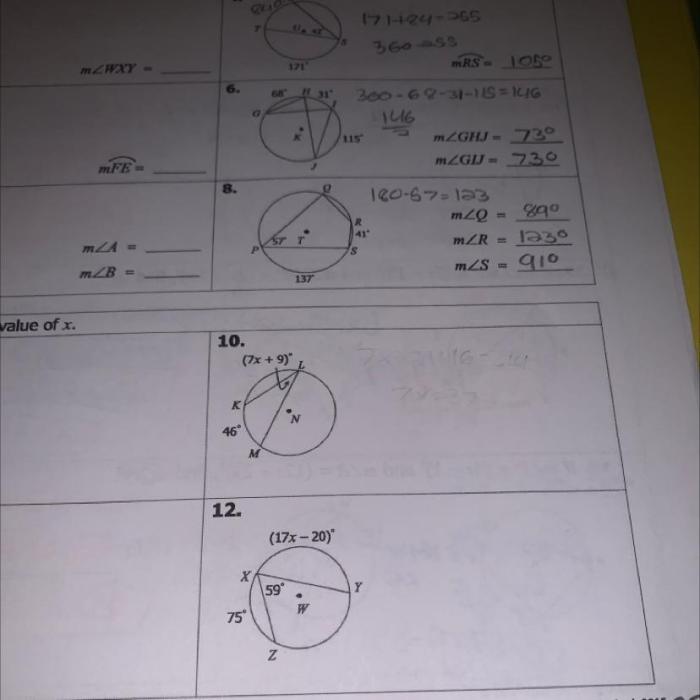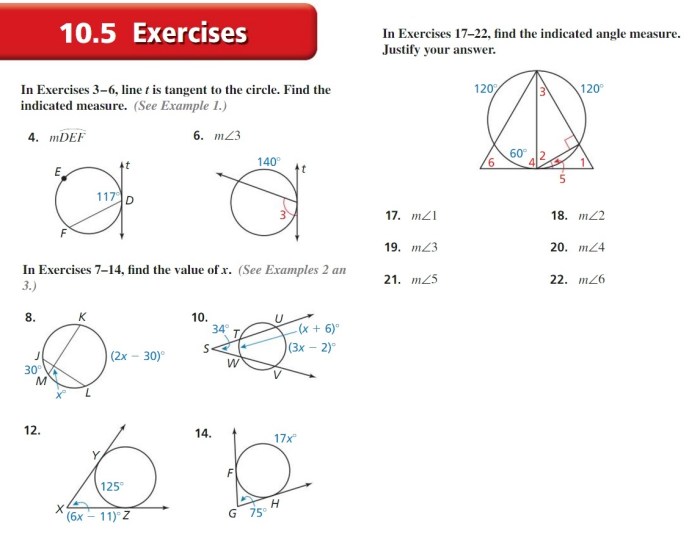Introducing unit 10 homework 5 inscribed angles, this discourse delves into the fascinating realm of geometry, where we unravel the intricate connection between angles and inscribed figures. As we embark on this exploration, we will uncover the fundamental concepts, measurement techniques, and practical applications of inscribed angles, shedding light on their significance in various fields.
Inscribed angles, formed when a polygon is inscribed within a circle, possess unique properties that govern their behavior. Understanding these properties empowers us to solve geometric problems and unravel the mysteries that lie within inscribed figures.
Inscribed Angles Basics: Unit 10 Homework 5 Inscribed Angles
Inscribed angles are angles formed when two chords intersect inside a circle. They are formed when a straight line cuts across a circle at two points.
Inscribed angles are half the size of the central angles that intercept the same arc. This means that if an inscribed angle measures x degrees, then the central angle that intercepts the same arc measures 2x degrees.
Examples of Inscribed Angles in Real-World Scenarios
- The angle formed by the hands of a clock at 3:00 is an inscribed angle.
- The angle formed by the spokes of a bicycle wheel is an inscribed angle.
- The angle formed by the two sides of a regular polygon that intersect inside the polygon is an inscribed angle.
Measuring Inscribed Angles
There are two methods for measuring inscribed angles: using a protractor and using the formula for inscribed angles.
Using a Protractor, Unit 10 homework 5 inscribed angles
- Place the protractor on the circle so that the center of the protractor is at the center of the circle.
- Align the 0-degree mark of the protractor with one of the chords that forms the inscribed angle.
- Read the measurement of the inscribed angle on the protractor.
Using the Formula for Inscribed Angles
The formula for inscribed angles is:
m∠ = 1/2(m∠C)
where m∠ is the measure of the inscribed angle and m∠C is the measure of the central angle that intercepts the same arc.
Properties of Inscribed Angles

Inscribed angles have several important properties:
- They are always less than 180 degrees.
- They are always half the size of the central angles that intercept the same arc.
- They are equal to the opposite exterior angle.
- They are supplementary to the opposite inscribed angle.
Applications of Inscribed Angles

Inscribed angles have a variety of practical applications in various fields, including:
- Architecture:Inscribed angles are used to design arches, domes, and other curved structures.
- Engineering:Inscribed angles are used to design gears, pulleys, and other mechanical components.
- Design:Inscribed angles are used to create decorative patterns and motifs.
User Queries
What is an inscribed angle?
An inscribed angle is an angle whose vertex lies on a circle and whose sides intersect the circle.
How do you measure an inscribed angle?
You can measure an inscribed angle by finding half the measure of its intercepted arc.
What are the properties of inscribed angles?
Inscribed angles have several properties, including:

